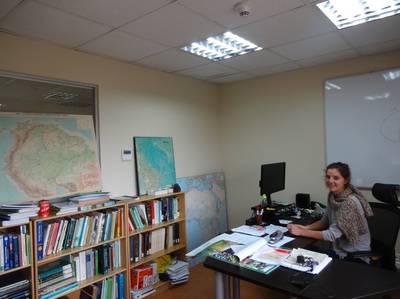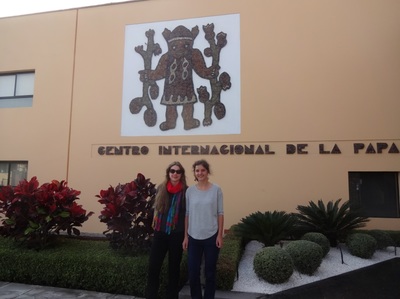by: Farilde Steur
In April I travelled to Lima, Peru, to work as in intern for the research-for-development organization Bioversity International (BI). Together with Evert Thomas, an ethno-botanist now focusing on species distribution modelling and restauration projects, I work on a modelling project in which we try to reconstruct the development of genetic diversity of tree species in South-America for the last 20.000 years. The BI office is part of the global agricultural research partnership CGIAR, and together with other CGIAR organizations located at the International Potato. At this location hundreds of people are working on food security, crop and tree diversity and forest management.
My activity at BI is for the greatest part writing the R script for the model. The aim of the model is to identify areas in which trees have the potential of a high genetic diversity. In this way we will know where to look for high quality forest reproductive material for restauration projects and it can help to maintain the genetic diversity of tree species. We use the principle that since the LGM climate has changed, hence species’ distribution as well. The history of a species’ distribution can be captured in patterns of genetic diversity of a species’ distribution nowadays. For instance the presence of glacial refugees during the LGM can be expressed as a higher genetic diversity at these places in comparison to their surroundings. Also, when formerly isolated populations connect, there will be an exchange of genetic material, increasing the genetic diversity. Using species’ distribution maps projected to the past we try to capture these processes and reconstruct species’ development of genetic diversity.
Thank you for reading and all the best from Lima!
In April I travelled to Lima, Peru, to work as in intern for the research-for-development organization Bioversity International (BI). Together with Evert Thomas, an ethno-botanist now focusing on species distribution modelling and restauration projects, I work on a modelling project in which we try to reconstruct the development of genetic diversity of tree species in South-America for the last 20.000 years. The BI office is part of the global agricultural research partnership CGIAR, and together with other CGIAR organizations located at the International Potato. At this location hundreds of people are working on food security, crop and tree diversity and forest management.
My activity at BI is for the greatest part writing the R script for the model. The aim of the model is to identify areas in which trees have the potential of a high genetic diversity. In this way we will know where to look for high quality forest reproductive material for restauration projects and it can help to maintain the genetic diversity of tree species. We use the principle that since the LGM climate has changed, hence species’ distribution as well. The history of a species’ distribution can be captured in patterns of genetic diversity of a species’ distribution nowadays. For instance the presence of glacial refugees during the LGM can be expressed as a higher genetic diversity at these places in comparison to their surroundings. Also, when formerly isolated populations connect, there will be an exchange of genetic material, increasing the genetic diversity. Using species’ distribution maps projected to the past we try to capture these processes and reconstruct species’ development of genetic diversity.
Thank you for reading and all the best from Lima!


 RSS Feed
RSS Feed
